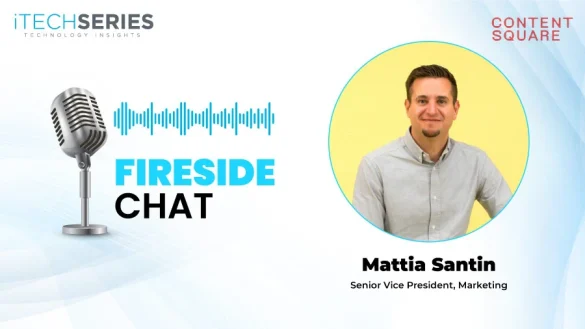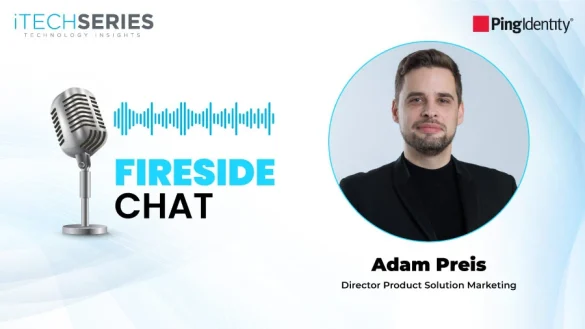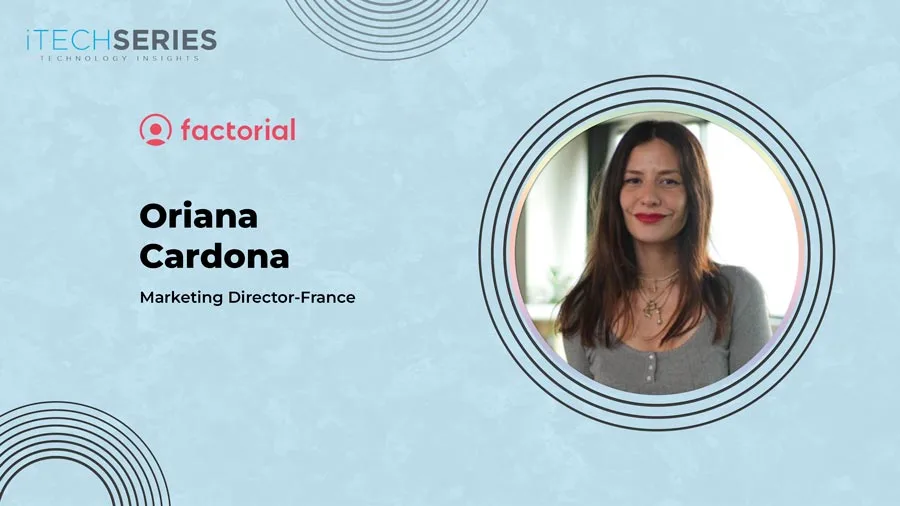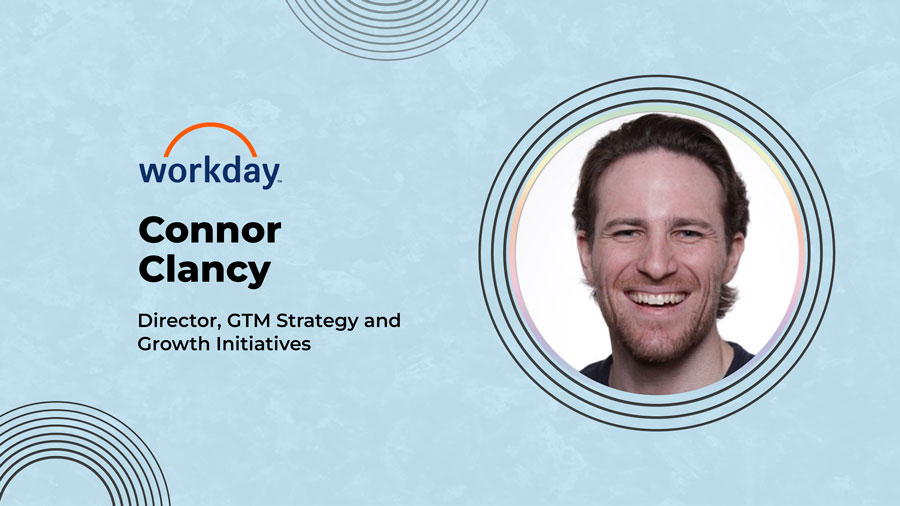Alessandra Atria, a senior field marketer, brings 15 years of experience in B2B marketing across SaaS, tech, and finance. She shares insights on driving revenue through regional demand strategies, evolving field marketing into a strategic function, and balancing brand, data, and human connection to deliver impact across UKI and Europe.
Welcome to the interview series, Alessandra. Could you please tell us more about yourself and your marketing journey?
Thank you for having me! So, I’m a marketer at heart, having worked in this industry for the past 15 years. My Career has been a real mix, leading campaigns, events, and demand generation strategies across the UKI and Europe. I’ve worked both in-house and as a consultant across industries like SaaS, Tech, and finance, always with a focus on delivering marketing that drives real business results. I find working in marketing to be incredibly dynamic and rewarding—it’s fast-paced, ever-evolving, and directly tied to growth and results.
What shifts have you seen in field marketing as organizations become more revenue-focused?
There’s definitely been a shift from purely brand- or awareness-led activities to marketing that’s closely tied to pipeline and revenue. Marketing, and specifically field marketing, used to be more of a “nice to have”—but it’s now become a strategic function, closely aligned with demand generation, sales, and overall business goals.
Over the last few years, I’ve observed a real focus on making sure all channels work together, from email and events to social and paid media, creating a seamless and homogeneous messaging across all channels. It’s much more about driving quality engagement at every stage of the funnel, not just ticking boxes, which is great and definitely the right way forward.
Tell us about a marketing campaign that was particularly challenging but turned into a valuable learning experience or success.
A campaign that’s stayed with me and I often think about when creating campaign strategies was one I led across multiple European markets during a past role.
With this campaign, the initial approach was to replicate the same assets across different regions, simply adapting the language. But it quickly became clear after launch that what worked well in one market didn’t quite land in another. It was a real challenge—we had a clear plan in place, but we had to rethink parts of it quite quickly to avoid wasting time and budget. The key was recognizing the need to adjust before it impacted performance and being willing to pivot rather than push through with something that wasn’t connecting.
The challenge was stepping back from the “one-size-fits-all” mindset and taking the time to understand each audience. That meant more conversations with local teams, reworking content, and being open to change. It wasn’t easy, but it taught me a lot about the importance of listening, being flexible, and not being afraid to adapt mid-campaign. And I’m not saying that having one central hero asset that is then adapted is a wrong approach, but the adaptation part needs to be thought through properly; a simple translation won’t do, the same as the channels used to promote it; multi-regional marketing can’t be a copy and paste. Unfortunately, it would be much easier if it were, but it’s not the case in real life!
I feel this experience really highlighted to me the importance of staying flexible. You can have the best-laid strategy, but if you’re not listening to local teams or adapting based on what the audience actually needs, you’re going to miss the mark.
What factors do you consider when choosing the right media channels for your regional marketing efforts?
I always start with the audience—who they are, where they spend their time, and how they prefer to engage. For example, LinkedIn works brilliantly for B2B awareness and retargeting, but when you’re after quick registrations or hand-raisers, email nurtures might work better.
I also look at what’s worked before—what’s brought good ROI—and pick channels that fit the campaign’s goals and content style. If I’m running a multi-regional campaign, I also consider the local market’s digital habits and culture, making sure everything feels relevant and authentic (I might get sidetracked here, but I will always remember the case of a famous lingerie company that had to quickly review their ads and dress up the models in the images in certain regions, as it simply wasn’t a cultural fit to have ads with people in their underwear in those regions and was harming the brand!).
Plus, the majority of the campaigns I run are multi-channel and integrated, so I always make sure channels work together smoothly and, when possible, tap into local partners or influencers to boost credibility. It’s all about being smart, practical, and connected to the region’s unique needs. Last but not least, let’s not forget data. Data is a marketer’s best friend and should be part of every decision and strategy, from historical data to real-time data, to make sure everything is constantly optimized.
“Marketing, and specifically field marketing, used to be more of a ‘nice to have’—but it’s now become a strategic function, closely aligned with demand generation, sales, and overall business goals.”
You emphasize the importance of collaboration. How do you ensure alignment across cross-functional teams when executing a complex marketing plan?
For me, alignment begins with clear communication and shared goals. I make it a priority that everyone—whether it’s sales, product, or creative—understands the plan and their role right from the start. I know some prefer to bring people in only when needed, but I believe involving everyone early, along with clear timelines for when their input is required, helps them plan their calendar better (we need to remember everyone is busy with projects and needs as much notice as possible to be productive and not get overwhelmed or burnt-out) and allows them to contribute valuable ideas from day one.
Also, regular check-ins and collaborative tools keep us all on the same page. I make a conscious effort to listen actively and encourage open feedback, so we catch any issues early. At the heart of it, it’s building trust and making sure every team feels involved, valued, and motivated to work toward the same goal.
Which key metrics do you use to evaluate the success of your field marketing efforts, and how do they shape your strategy?
I usually start with key metrics like engagements and leads—basically, are we getting people through the door? But I don’t stop there. After the campaign has gone live and we’ve started receiving the first engagements, I dig deeper into lead quality and how engaged those contacts are. This is where close collaboration and regular check-ins with sales really pay off, because they will have insights that I might not necessarily see on my marketing dashboards and data. Using all this data, I continuously refine our approach to make sure future events deliver the best ROI and strengthen our market relationships.
As a marketing leader, how do you strike the right balance between using AI and maintaining a human touch in your campaigns?
I see AI as a fantastic tool to boost marketers’ efficiency and productivity, especially when workloads get heavy. It’s also a great source of fresh ideas. But it can’t replace human knowledge or experience—after all, generative AI learns from us and from what we put out in the world, so it’s really a give-and-take relationship.
I also believe proper training is key. Everyone thinks they can just jump in and use AI, kind of like how people assume anyone can do social media marketing!—but it takes skill to write the right prompts and get the outcomes you want. When used well, AI becomes a true ally and a powerful helper in our work, but we should never use it as a substitute for our knowledge or skills. I actually wrote an article about this not long ago.
How can marketers develop a unified strategy that effectively balances brand building with lead generation?
Balancing brand building with lead generation is really about mixing long-term strategy with short-term goals. To me, brand building is the foundation of everything—it’s all about creating trust and connecting people emotionally to what your business stands for. Without that solid foundation, running a successful lead generation strategy will be tough, simply because people need to know you exist and who you are (on top of trusting your brand) before they’re ready to take action. So, lead gen is about driving immediate results, but it has to be built on that strong brand base.
I usually focus on making sure our messaging stays true to the brand but also includes clear calls to action that help move prospects along. As mentioned before, data is key—it helps me see how our brand efforts are actually driving better leads and sales, so we can keep fine-tuning.
How do you navigate the intersection of data and instinct to create impactful marketing strategies?
For me, it’s about balancing data with experience and informed assumptions.
Data will provide the facts (what’s working and what’s not) so decisions can be measurable and grounded. But experience helps me interpret that data, understand the context, and make educated assumptions about what might work next, based on knowledge of the audience and market. In short, I rely on data to guide strategy and track success, but I also trust my experience to fill in the gaps where data alone can’t provide all the answers.
About Alessandra Atria
Alessandra Atria is a strategic B2B marketing leader with 15 years of experience driving growth across SaaS, tech, and finance. She combines creative thinking with data-driven insights to build high-impact campaigns that boost brand visibility and pipeline performance. Known for her collaborative approach and digital expertise, Alessandra transforms marketing challenges into opportunities, helping businesses thrive in today’s dynamic landscape through strategic vision, adaptability, and measurable results.











